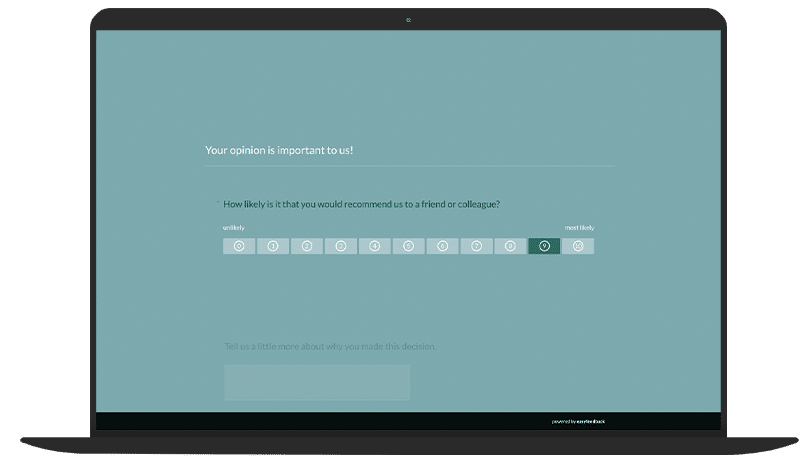Why measure customer engagement?
Customer engagement is more than just interaction – it is an indicator of loyalty, satisfaction and the likelihood that customers will recommend your brand to others.
By measuring it, you can:
- Make successes visible: Show whether campaigns or measures are actually having an impact.
- Derive optimizations: Understand where customers are churning or why they remain loyal.
- Promote growth: Identify valuable customers and create more of them.
Important metrics for customer engagement
1st key metric: Net Promoter Score (NPS)
The NPS measures how likely it is that a customer will recommend your brand to others.
A high score indicates strong engagement and a positive experience.

2nd key metric: Customer Lifetime Value (CLV)
The CLV indicates the value a customer brings over their entire relationship with your company.
An increasing CLV indicates growing loyalty and commitment.
3rd key metric: Interaction rate
This metric measures how often customers interact with your content or products – be it through social media likes, website visits or opening emails.
4th key metric: Churn rate
The churn rate shows how many customers are leaving.
A falling churn rate can indicate increased engagement and loyalty.

5th key metric: Time on the platform
How long do customers spend on your website, app or in your store?
More time indicates greater interaction and interest.
How do you measure customer engagement effectively?
1st option: Obtain feedback
Direct customer surveys provide qualitative data that give insights into feelings and opinions.
2nd option: Use data analysis
Tools for analyzing website and app usage behavior help to identify patterns and make data-based decisions.
3rd option: Check KPIs regularly
Continuous monitoring of metrics ensures that you can react to changes in good time.
The challenges of measuring customer engagement
Measuring customer engagement can be complex.
Data sources are often scattered and not every interaction can be easily quantified.
It is also important not to ignore qualitative and emotional aspects, as numbers alone do not tell the whole story.
Conclusion
Measuring customer engagement is a crucial step in better understanding your customers and optimizing your strategies.
The right combination of metrics, tools and analytics will give you a comprehensive overview of the strength of your customer relationship.
By leveraging these insights, you not only create a competitive advantage, but also lay the foundation for long-term success.
Create a system that helps you to continuously measure and improve engagement – your customers and your company will thank you for it.
More about Customer Engagement
- Customer Engagement: The art of retaining customers in the long term
- 7 Key metrics in customer engagement
- Customer engagement in practice: Real-life examples of successful strategies
- Measuring Customer Engagement: Why it is crucial for your success
- Customer engagement in marketing: Importance, strategies and benefits
- Customer Engagement: The best tools for customer loyalty and interaction




